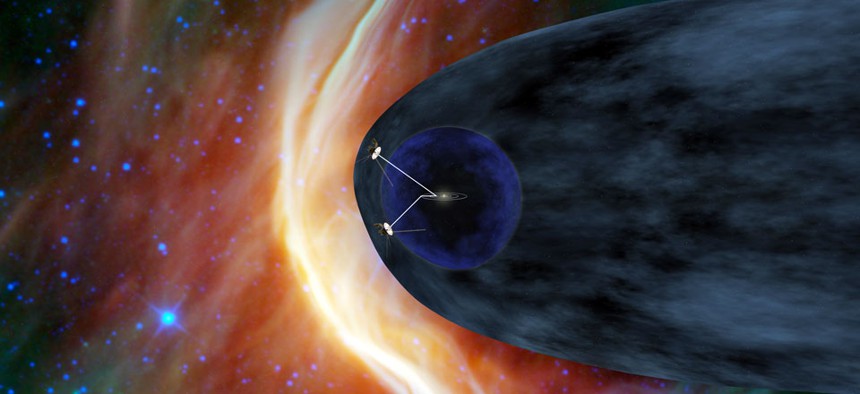NASA: Voyager 1 Is in a 'New Region' of Space

The Voyager spacecraft barreling away from the sun. NASA/AP
But it hasn't quite left the bubble around our sun yet.
For months, space enthusiasts have been sitting on the edges of their seats, ready for the Voyager 1 spacecraft to become the first emissary of human civilization to cross from the bubble around our sun* into interstellar space. Last August, two of the three instruments on Voyager 1 started sending back signals that something was -- suddenly, dramatically -- different. Particles from our sun fell way off, and cosmic rays from outside our system shot up. Was this the moment we'd all been waiting for?
Well, not quite yet. That third indicator -- the magnetic field data -- has turned out to be a bit, well, stubborn, showing month after month that Voyager is still in our sun's magnetic field. Two out of three ain't bad, as they say, but scientists need all three boxes checked before they will officially say that Voyager has crossed over, NASA explained in a release today.
Now scientists are giving Voyager's current home a new name -- the heliosheath depletion region. As Kelly Oakes writes in a terrific explanation in Scientific American:
Yep, what Voyager's instruments are now showing us is so odd we need a new name for it. Voyager is, almost literally, pushing the boundaries of our knowledge about the solar system.
Which, if you think about it, is hardly surprising. As Stamatios Krimigis of John Hopkins University, Maryland, and his colleagues write in one of the three papers out today, our ideas about the size and shape of the bubble of plasma we call the heliosphere, created by the solar wind that continuously flows from the sun, are older than the space age.





